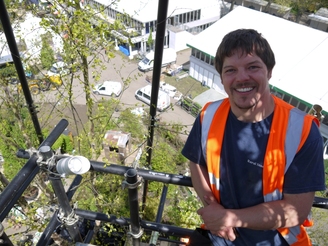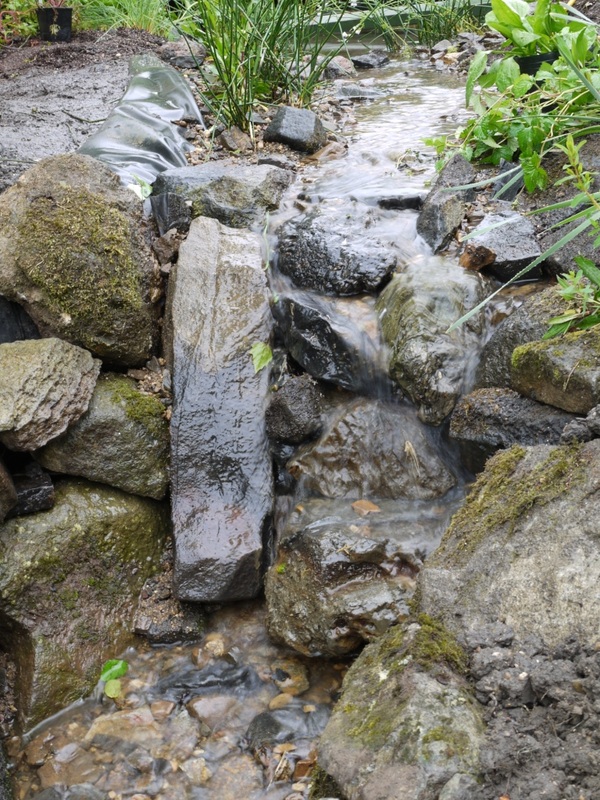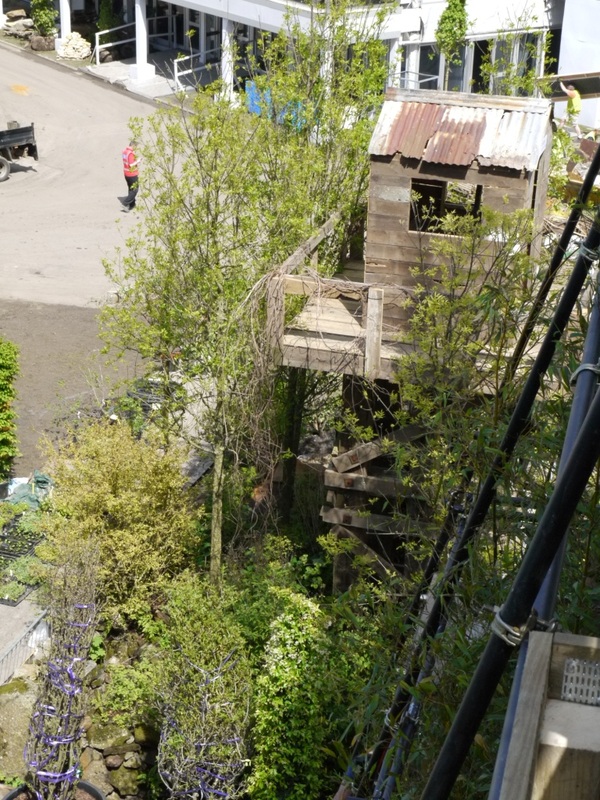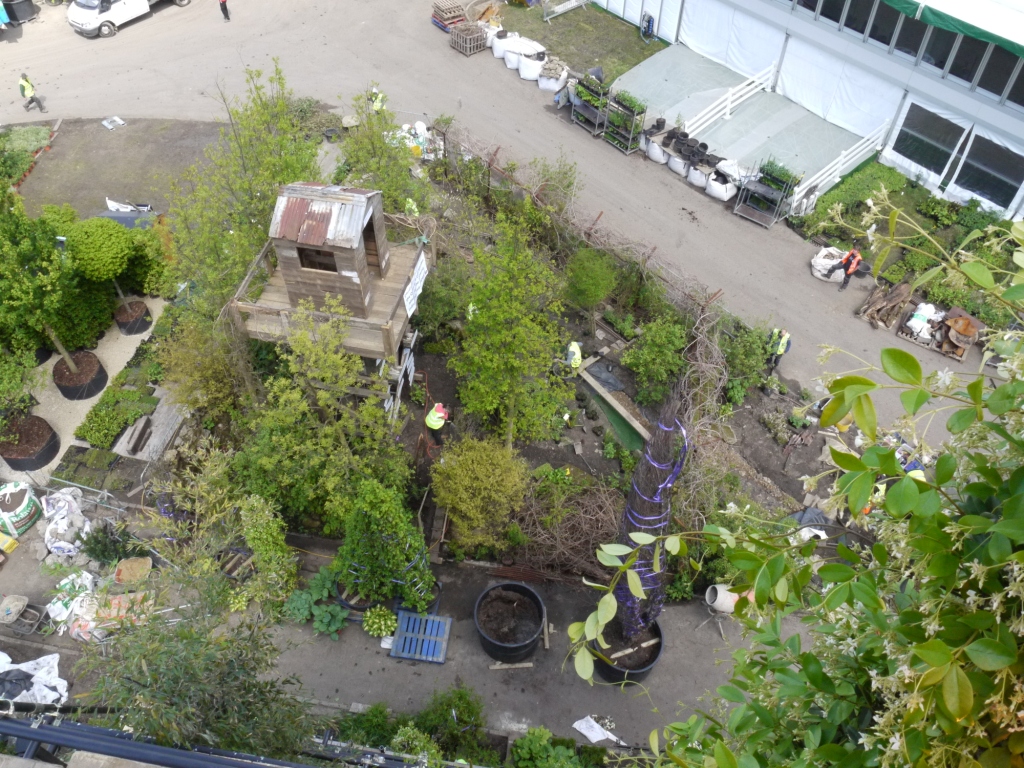
Steve Compton (Rural Stonework) way above the DMZ.
Finally, the Rural Stonework team (of two!) have returned from the Chelsea Flower Show build-up, after weeks of hard work, not only building the garden, but also gathering and packaging the stone.
In similar circumstances to last year, the preparation for this project, was more demanding than the actual build itself - bearing in mind that we had to transport the stone from Dartmoor to London, whilst keeping it in pristine condition, with live moss, lichen and other plant life protected and intact upon arrival.
All involved with the garden have done an amazing job, in less than perfect circumstances. At one point, the entire project was hanging in the balance due to sponsorship issues. Fortunately, Dan Flynn, from Gardenlink, stepped up to act as a guarantor for the build, and the project was back on track. However, due to the change in circumstances, the number of employed tradesman had to be minimised (including the Rural Stonework team), and a host of willing volunteers were drafted in by Dan. Although there was only Cameron and myself on site to do the stonework, Ben Davies deserves a special mention for his tireless efforts in gathering and delivering additional materials to London, in difficult conditions.
Just this week, there were also issues with the importation of the rare Korean plants, essential to the concept. Thankfully, these should now be in the soil by the weekend.
So fingers crossed for Sunday, when the judging takes place. Keep an eye out for the results on Tuesday by checking this blog in the morning!
Below is a outline of the garden concept, as published on the RHS website, in case you haven't seen it.
In similar circumstances to last year, the preparation for this project, was more demanding than the actual build itself - bearing in mind that we had to transport the stone from Dartmoor to London, whilst keeping it in pristine condition, with live moss, lichen and other plant life protected and intact upon arrival.
All involved with the garden have done an amazing job, in less than perfect circumstances. At one point, the entire project was hanging in the balance due to sponsorship issues. Fortunately, Dan Flynn, from Gardenlink, stepped up to act as a guarantor for the build, and the project was back on track. However, due to the change in circumstances, the number of employed tradesman had to be minimised (including the Rural Stonework team), and a host of willing volunteers were drafted in by Dan. Although there was only Cameron and myself on site to do the stonework, Ben Davies deserves a special mention for his tireless efforts in gathering and delivering additional materials to London, in difficult conditions.
Just this week, there were also issues with the importation of the rare Korean plants, essential to the concept. Thankfully, these should now be in the soil by the weekend.
So fingers crossed for Sunday, when the judging takes place. Keep an eye out for the results on Tuesday by checking this blog in the morning!
Below is a outline of the garden concept, as published on the RHS website, in case you haven't seen it.
Quiet Time: DMZ Forbidden Garden
The barbed wire fence surrounding the garden creates a feeling of mystery and unease. Carefully considered installations feature the remains of warfare, including defensive walls, trenches and charred trees. The fence is hung with cans and bottles containing letters from separated families and friends to illustrate the sense of longing felt by people kept apart by the conflict.
The watch tower reminds visitors of the surveillance of the DMZ and also provides an observation point for the garden. A memorial chair commemorates war veterans and victims. A stream flows through the garden, defying the barriers of human conflict and depicting the feelings of love and tension that the designer believes co-exist in the DMZ.
- Sponsored by Muum, Korean Air, The Dowager Viscountess Rothermere, gardenlink
- Designed byJihae Hwang
- Built by gardenlink
The barbed wire fence surrounding the garden creates a feeling of mystery and unease. Carefully considered installations feature the remains of warfare, including defensive walls, trenches and charred trees. The fence is hung with cans and bottles containing letters from separated families and friends to illustrate the sense of longing felt by people kept apart by the conflict.
The watch tower reminds visitors of the surveillance of the DMZ and also provides an observation point for the garden. A memorial chair commemorates war veterans and victims. A stream flows through the garden, defying the barriers of human conflict and depicting the feelings of love and tension that the designer believes co-exist in the DMZ.








 RSS Feed
RSS Feed
